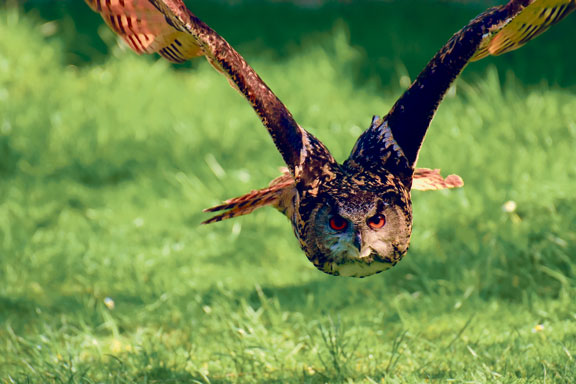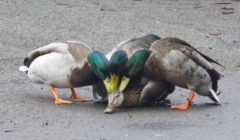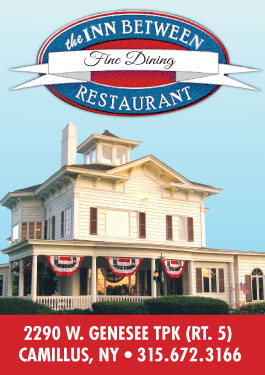Thinking Naturally
Like animals in the wild, we’re instinctual. The serotonin that resides in our guts and our brains is the same neurotransmitter that, in nature, causes grasshoppers to swarm.Knowing how our fight/flight responses operate and feel helps us better regulate and choose our own reactions. Nature wires our brains and nervous systems to keep us fed, learning, and communicating.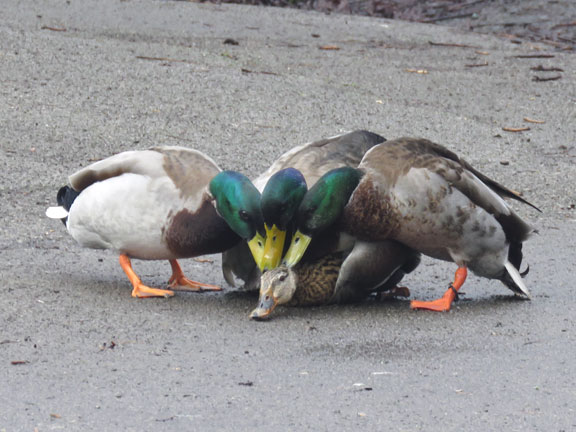
Nature communicates, and my deck railing is a meetup place for doves. The doves dance toward and away from each other, sometimes lingering together long and close, nuzzling each other, their feathers fluffing out, all of it appearing fluid, natural, and very unlike another mating behavior I once heard about in anthropology class; mallard males sometimes gang up on a single female. Once at Onondaga Lake Park, I watched several males attack a lone female who struggled to run and fly away but never managed to get more than ten or so feet into the air before being dragged down to the ground by her pursuers. There are many mallards at the park; I’ve only seen this phenomenon once. Why then?
Canada geese mate for life.
In my neighborhood a couple years ago, a flock of crows chased and pecked at a large owl who, for a painful moment, seemed to stare pleadingly at me from a low tree limb where she tried unsuccessfully to rest. The crows quickly succeeded in forcing her into a slow labored upward flight. I felt terrible for her.
How do I know the owl was a she?
I don’t. I was projecting.
Freud defined projection as the conscious or unconscious attribution of one’s feelings to others. We learn in context, and theory of mind, a capability common to seven-year-old children and adult crows, is the awareness that “we” think our thoughts, “they” think their thoughts, and those thoughts are not the same. Thinking that everyone thinks or should think what you think creates conflict and fight/flight stress. Uncontrollable stress leads to anxiety and depression.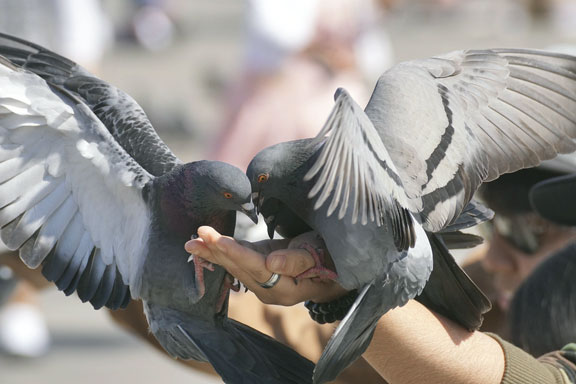
Many people say they feel stressed out.
I sought help for anxiety and found a therapist who pushed me to sign up for a week-long co-dependency program. It’s been said that codependents would rather carpet the world than wear bedroom slippers. I say so-called codependents might just seek a better world. Anyway, in one recovery exercise, I participated in a group instructed to surround and poke a fellow codependent who stood mutely. When I wouldn’t poke the guy, everyone turned on me. I physically pushed out of the encircling. The facilitator pushed me back in. The group closed in on me making it more difficult for me to escape. I later learned that this exercise was individually scripted just for me to provoke me into saying, “stop!”
This therapy program further sought to challenge participants’ denial. Freud identified denial as a personal defense mechanism by which someone avoids some painful truth or emotion. I left the week-long program having learned new communication techniques, but with my “denial” intact.
Years later, in November 2011 during a walk at Clark Reservation, a recipe discussion triggered a memory that led to other memories about events I didn’t remember but should have. There is no denying that.
And there is no denying this: people live with physical brain injuries they don’t know they have, maybe struggling for their own minds amid psychological labels and projections. I’ve read enough about it to believe I’m not projecting.
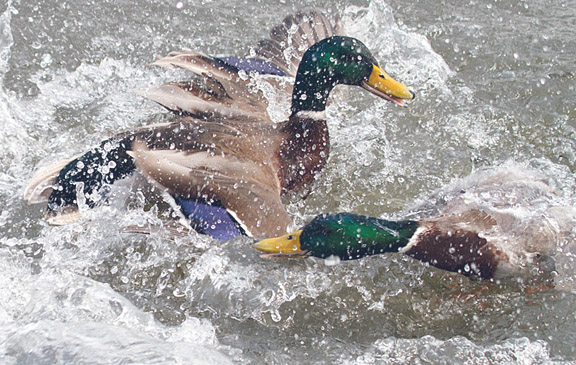
Now, I want to go back to my owl story, which I shared with a friend who insisted the owl I’d seen must have been a hawk. I defended my perceptions. The tall distinctive bird I’d seen, from no more than ten yards away, was an owl. I’ve seen many hawks. This bird was an owl. My friend who’d not been there disagreed and said she’d check with her friend, who also hadn’t been there. Lucky for me, my friend’s friend told her, and she told me, that the bird I saw being chased by crows perhaps was an owl because owls sometimes raid crows’ nests in search of eggs to eat. My friend’s friend said that I should not worry: owls are tougher than crows and an owl would do just fine against a crow.
I’m not so sure that this owl did fine. For much of that morning, the crows’ caws would diminish and grow louder as the avian battle moved from tree to tree with ever larger crowds of crows menacing the lone owl. The cawing eventually stopped. I hoped for the best.
One more bird story: I heard an alt-right activist compare white liberals to reed-warblers. Reed-warblers are birds who sometimes gestate cuckoo eggs dropped into their nests by cuckoos. Cuckoos, according to bird guides, are one of several bird species known as avian brood parasites. Cuckoos mimic other birds to get access to their nests.
In human parlance, cuckoo is not defined as “like a cuckoo bird,” but rather, “foolish or silly” or, “mentally ill.” In human terms, avian cuckoos are crafty strategists; misled reed warblers might be labeled “cuckoo.”
Language shapes perception.
We all share nature, but do not share the same natures. I know what I know, and I believe what I believe. Belief best evolves from experience and learning, or so I think. What do you think?
